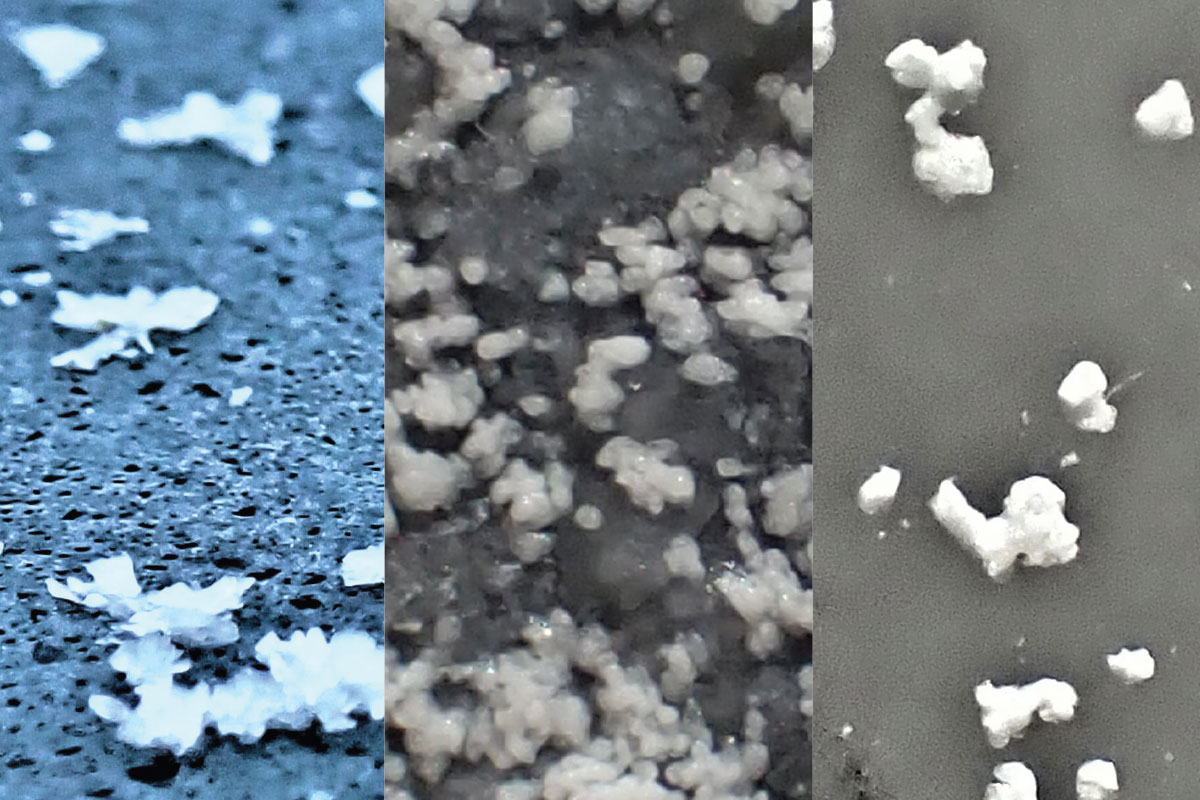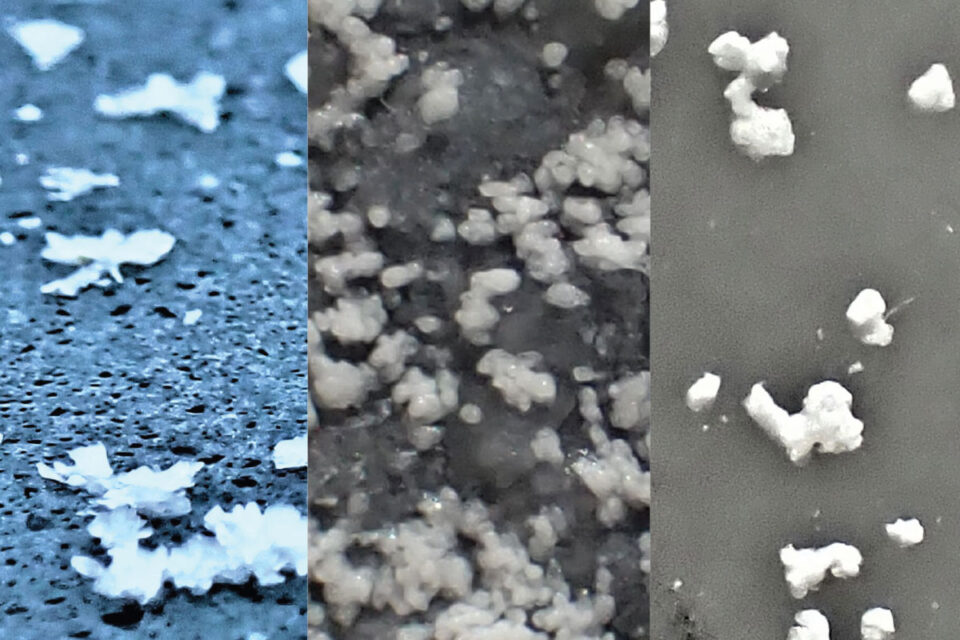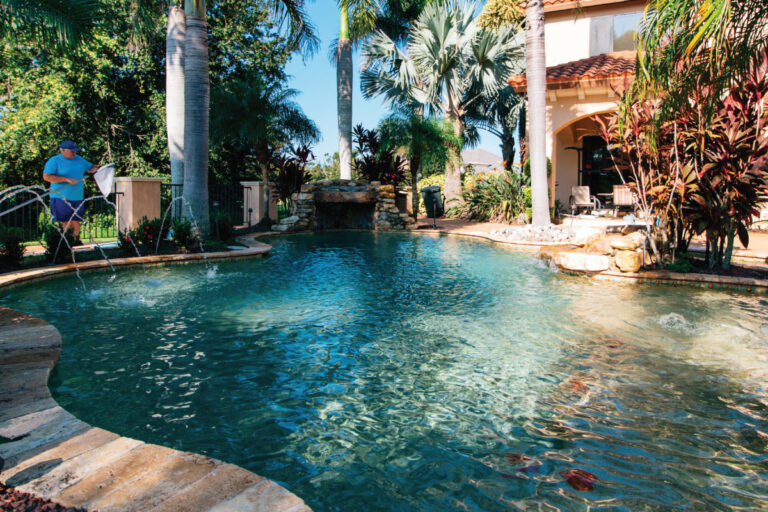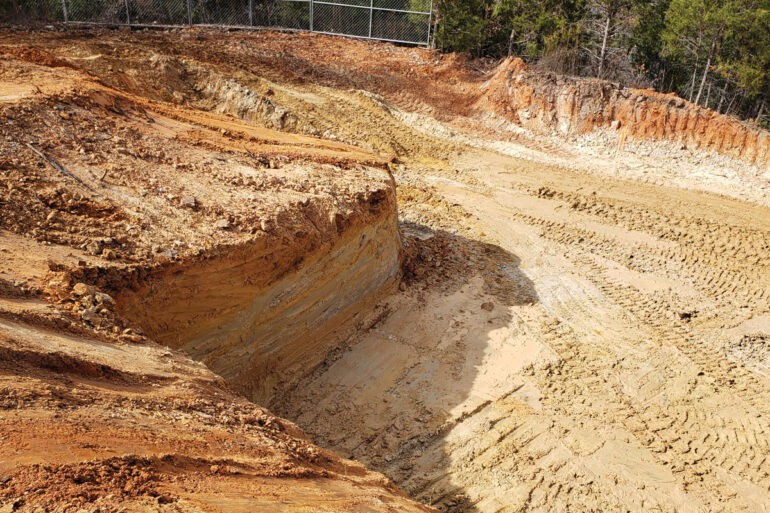Ban Built-in Blemishes

Pool stains are often associated with lackluster pool maintenance. But pool stains can surface immediately following construction if proper preventive measures aren’t taken during the build.
Stain prevention begins with protecting the pool throughout construction. Jeffery Anderson, managing member of Mayan Pools & Sports Construction in Atlanta, says one of the most common errors he sees is builders not covering and protecting the coping through the process.
“There will be times that you, your crew, your subs or even the owner’s other contractors are on-site during the build,” Anderson says. “They will often use the coping to walk on, particularly when the ground around the pool is mud. Mud can easily stain the coping stone and grout, requiring an unnecessary punch-list item of having to deep-clean the coping and grout — or even in some cases remove some of the coping stones and reinstall.”
Anderson uses plastic (and an adhesive spray to keep it down) to cover the coping until all building on the property is complete. He also warns not to clean the coping until the pool is filled.
“We see the builder or the plaster crew cleaning the coping and pool decking after the pool is plastered,” Anderson says. “They inadvertently get water running down the side of the pool from the dirty coping and deck, and the plaster begins at least some level of hydration at this point. This is usually very telling, as you can see vertical streaks along the upper walls of the pool where water ran down the plaster. We wait until the pool is full of water to pressure wash the coping after the plastering process.”
Chad Davies, construction operations manager for Mastercraft Pool & Spa in Pocatello, Idaho, says his team prefers home construction and landscaping to be complete before plastering the pool.
“We strive to educate owners that plaster is the absolute final step to the project,” he says. “Dust and debris blowing into the pool once it’s filled is another leading cause of staining in our area. Since we can’t control the debris from blowing in, we try to take as much prevention by cleaning the area. We want landscaping done to prevent dust, we want the home finished to prevent metal siding shavings being introduced, and we want decks finished and hosed down.”
Scott McKenna, CEO of Gardner Pool Plastering in El Cajon, California, recommends putting an 18-inch square tile “pad” around each floor return in the pool during installation. “Staining and degradation of the plaster often occur around the floor returns because of the high concentration of chemicals due to auto-feed systems,” he says.
McKenna also recommends that wall returns not be placed too close to the floor or on top of Shamu shelves, steps or benches, also because of higher concentrations of chemicals in these areas.
Fill water chemistry is vital as well, Davies says. “Knowing what your water is well before plaster day is key to having the right products to balance the water when you start to fill,” he says. His company tests source water with BioGuard’s ALEX water testing and adds calcium to the fill water as needed to prevent the water from pulling calcium out of the cement (a common cause of chalky staining to the pool plaster).
“If we lived in an area with majorly low calcium [in the water], I would invest in a startup system from Orenda,” Davies says. “However, we mainly need a scale inhibitor to prevent the calcium from building up on the walls here.”
Anderson says testing the fill water for metals is important, too. “Metals can turn the water color brown or even green-blue,” he says. “Having pretested fill water, or even treating the fill water in the pool with sequestrants prior to or during the fill, can save a lot of headache, especially with white plaster projects or plasters with small aggregate.”
He also suggests builders educate homeowners on the importance of not turning off the fill water before it reaches the waterline tile. “This can leave a bathtub-like ring around the pool,” he says of turning the water off too early.
Another error Anderson sees after initial fill of a newly finished pool is the builder or homeowner not waiting until the plaster dust is removed from the system before turning on the pool heater. “This can cause scaling on the new pool finish and can sometimes cause metal staining,” he says. “The pool needs to be brushed twice daily until the plaster dust is removed or after a week has gone by, at which time the remaining dust can be vacuumed up by a brush vacuum.”
Both Davies and Anderson site the National Plasterers Council as a valuable resource for pool startup instructions, recommending that pool builders become members and stay up-to-date on best practices.
“Know your water, know your environment,” Davies says. “The plaster is permanent. We want a sterile environment to create the best possible outcome.”
Common Pool Build Errors and Necessary Precautions
The National Plasterers Council polled its expert members to compile a list of common pool build errors and necessary precautions to prevent stains.
Common Errors
- Poor pool design. Don’t create dead space in a pool where the water does not circulate
- Failure to consider the dominant wind direction when determining skimmer placement
- Poor filtration, undersized filters, poor hydraulics
- Not using a quality sequestrant
- Lack of on-site supervision of all phases of work
- Utilizing improper startup procedures
- Failure to document the mix-design of the finish and the startup procedure
Recommended Preventions
- Educate homeowner on running the filtration system long enough to keep the water clear after initial fill.
- Use a trained technician to conduct the startup procedure.
- Wait to plaster the pool until the filtration and circulation equipment is installed and functioning.
- Test the fill water before filling and be prepared to counter the results.
- Be present on the jobsite on the day of plastering.
- Take pictures of the pool on the day of completion, before filling, in case issues arise.
- Be proactive in stain prevention (rather than reactive with stain removal) by enrolling employees in an NPC startup class and following NPC startup procedures.






